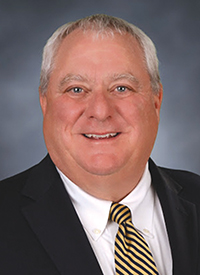 Ernest DesRochers, NorthMarq Capital
Ernest DesRochers, NorthMarq CapitalAccording to Franklin Roosevelt, “Real estate cannot be lost or stolen, nor can it be carried away. Purchased with common sense, paid for in full, and managed with reasonable care, it is about the safest investment in the world.”
The Mortgage Bankers Association recently held its annual Commercial Real Estate Finance and Multi-Family Conference in San Diego, California. Over 3,000 people attended the four day conference whose focus is networking, relationship building and deal making.
The market sentiment for commercial real estate investing is still optimistic. Conference participants were uncertain, however, if this optimism can continue. There were several takeaways from the conference which support this premise:
• Lenders are preparing for all possible scenarios given the current economic and political climate. Strong job growth and a stable economy has led to more than just talk that rates will be increased by the Federal Reserve this year. These facts are reflected in their new loan underwriting models.
• Life insurance company lenders, long the bellwether for commercial real estate lending trends, all desire lower lower-leveraged, higher-quality, best-of-class mortgage loans, eschewing risk for safety. For example, 70% LTV lenders last year want 65% LTV deals today. 65 percent lenders last year want 60% today with all lenders using widening cap rates.
• CMBS lenders have gotten back into the market at lower spreads after a year that was characterized by high spreads and uncertainty about risk retention. Most have figured out risk retention with some firms owning their own “B” pieces. Like life company lenders, CMBS lenders are very concerned about credit quality and leverage. 75 percent last year is 70% (and less) today. Lower stressed LTV ratios and increased debt yield requirements are commonplace.
• The market for commercial property sales has slowed down. More and more market participants believe prices have peaked nationally and in the Tri-State region. Property owners will no longer have cap rate compression to bail them out. The new cap rate trend is upward.
• Other capital sources who provide fuel to the lending market are the GSEs consisting of Freddie Mac, Fannie Mae, and FHA. They are the most active multifamily lenders in the country, but they too have a continued measured approach to lending.
• Regional banks and credit unions have tightened underwriting on account of new regulation and economic concerns. They will take more risk generally because of their recourse requirements.
• Money for bridge lending from private equity firms is more available now than at any time in the recent past. Generally non-recourse these loans at 75% of value and pricing is generally 450 bps over Libor or higher depending on risk.
• Unlike past cycles, borrowers have not been pushing the envelope on trying to finance real estate projects. In many respects borrowers are just as disciplined.
Underwriting parameters continue to be conservative. Insurance companies are generally quoting spreads of 160-200 over U.S. Treasuries for sub 65% loans. Lower spreads for lower LTV loan are available. The minimum debt coverage ratio is generally 1.50x assuming a 25 year amortization schedule. Available loan terms are generally 7-10 years with longer fully amortizing loans (up to 30 years) available on a select basis.
In contrast, pricing for conduit loans are generally 200-245 over swaps with loan to value ratios of 70% or less. Spreads can be tighter for lower sub 60% LTV deals. These loans generally require full leasing reserves. Generally these loans are 10 years in length with 30 year amortization. Some interest only may be available if the property, and leverage, warrants.
Multifamily lenders continue to have strong deal flow but they too have gotten more conservative. Pricing is generally 175-225 over U.S. Treasuries depending on leverage and DSC ratios are a minimum of 1.35x. Loan terms are generally 5-10 years.
In common with all of these lenders is the desire to maintain discipline with respect loan underwriting metrics. As capital continues to chase the best deals, lenders are holding to debt yield, LTV and debt service constraints, and are insisting on getting paid for risk.
With the second quarter about to commence, investors with financing needs will have to meet market challenges head-on in order to achieve desired financing levels.
Ernest DesRochers is senior vice president and co-managing director of the Metro New York regional office of NorthMarq Capital, New York, N.Y.








